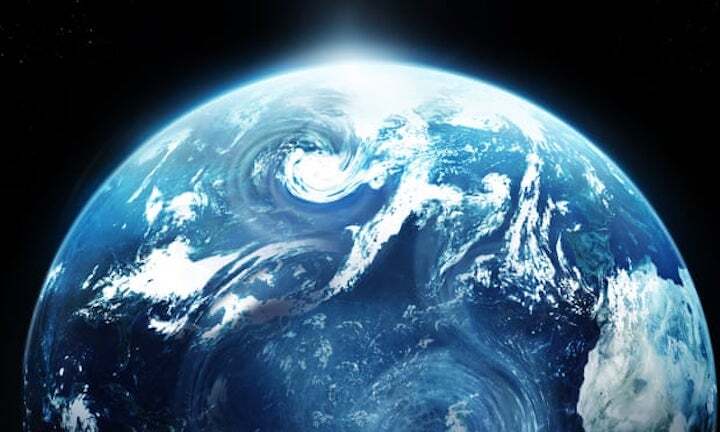13.12.2021
New British research backs theory that parched planet’s water all came from extraterrestrial source

It covers three quarters of the surface of the Earth and gives our planet its distinctive blue complexion when viewed from outer space. But the source of the liquid water that sustains our seas and which has nourished life on our world for eons is a subject of major scientific debate.
Some researchers argue that water in some form has been present on our world ever since it coalesced out of swirling clouds of dust and gas 4.5 billion years ago. Earth has always been provided with a reservoir, in short.
Other scientists take a different view, however. They say that in the beginning Earth was parched and waterless and our oceans only appeared much later – when ice and water rained down on our world from extraterrestrial sources. These were responsible for most of the 332,500,000 cubic miles of water that now cover our planet, it is argued.
And now, a group of British scientists has provided key backing for the idea that the origins of our seas were out of this world. They have studied grains of material – found on an asteroid called 25143 Itokawa and brought back to Earth by a Japanese robot probe – and concluded these support the idea we got our oceans from outer space.
“The dust we have studied provides good evidence that our oceans were created from water that came from other parts of the solar system,” said Luke Daly, of the University of Glasgow. “It suggests that at least half the water we have on Earth filtered down from interplanetary dust.”
Daly and his colleagues used atom-probe tomography to study grains of dust that were returned from 25143 Itokawa. This remarkable technique allows scientists to count the atoms in a sample one by one. In this way, it was revealed that the grains brought back from the asteroid contained significant amounts of water, the scientists state in a paper published in the journal Nature Astronomy.
This water was most likely created by the solar wind, a stream of particles that flows out from the Sun, added Daly. These particles would have interacted with oxygen atoms in the clouds of dust that float through the solar system to create water molecules which would have built up in the clouds over the history of the solar system.
Then, as Earth orbited the Sun it would have swept through these clouds and mopped up the dust grains – and their water. In this way, water – “the driving force of all nature,” as Leonardo da Vinci once put it – would have filtered down from the skies on to our planet, it is argued.
Crucially, other bodies orbiting the Sun would also have swept up these water-bearing grains. On Earth, these little fragments of silicate have long since disintegrated but on airless asteroid 25143 Itokawa, they will have lain undisturbed on its surface, probably for billions of years, until the Japanese probe Hayabusa swept up a sample and brought it back to Earth where its contents were revealed.
The group, which also included Professor Martin Lee, of the University of Glasgow, stresses that they do not think all the water in our seas came from solar dust grains. An equally important supply would have been provided by ice in comets and asteroids that crashed on Earth. “In combination, solar dust and icy comets provided us with the oceans in which life evolved,” said Lee.
This last point is supported by the fact that ice from comets and asteroids contain relatively high amounts of the hydrogen isotope deuterium compared with water on Earth while solar dust contains relatively low levels of deuterium. In combination, the two sources balanced each other out to provide an isotopic signature that matches that of water on Earth.
And the discovery is important not just because it provides compelling evidence about the origin of water on Earth. It also suggests that other worlds in the solar system could have water, perhaps in the form of ice, on their surfaces with key implications for future space exploration and the search for life elsewhere in the galaxy.
“Any sort of moon should be home to a renewable reservoir of water produced by the solar wind,” said Daly. “And that would be important for human space exploration. We need water to drink to keep our bodies going and we could also use it, by splitting water molecules into their hydrogen and oxygen components, to make rocket fuel. In the coming years, as we establish a base on the Moon, sources of water like these are likely to be invaluable. We won’t have to carry water with us when we travel across the solar system.”
One deposit of ice is now believed to have formed in the Shackleton crater near the south pole of the Moon and this is the main target for Nasa’s forthcoming Artemis programme, which aims to set up a colony there and exploit its water resources.
And the observation that interplanetary dust within our own solar system contains water also has implications for seeking life elsewhere in the galaxy, added Daly. “Across our galaxy, we can observe dust clouds in other star systems where planets are forming. That suggests these worlds will have a supply of water that will allow them to develop seas and oceans and then, possibly, life of some kind.”
Quelle: The Guardian

